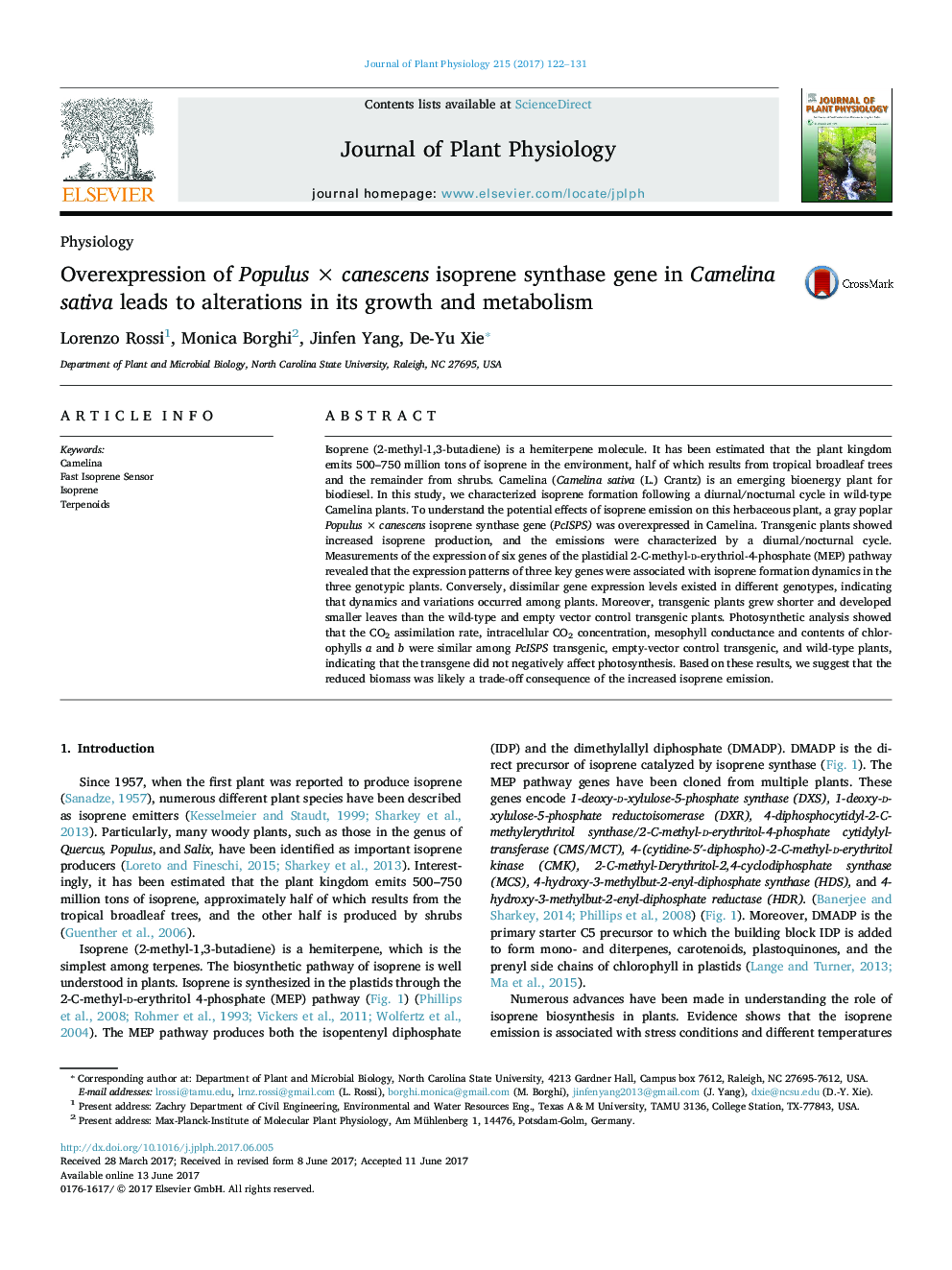| کد مقاله | کد نشریه | سال انتشار | مقاله انگلیسی | نسخه تمام متن |
|---|---|---|---|---|
| 5518003 | 1543863 | 2017 | 10 صفحه PDF | دانلود رایگان |

Isoprene (2-methyl-1,3-butadiene) is a hemiterpene molecule. It has been estimated that the plant kingdom emits 500-750 million tons of isoprene in the environment, half of which results from tropical broadleaf trees and the remainder from shrubs. Camelina (Camelina sativa (L.) Crantz) is an emerging bioenergy plant for biodiesel. In this study, we characterized isoprene formation following a diurnal/nocturnal cycle in wild-type Camelina plants. To understand the potential effects of isoprene emission on this herbaceous plant, a gray poplar Populus Ã canescens isoprene synthase gene (PcISPS) was overexpressed in Camelina. Transgenic plants showed increased isoprene production, and the emissions were characterized by a diurnal/nocturnal cycle. Measurements of the expression of six genes of the plastidial 2-C-methyl-d-erythriol-4-phosphate (MEP) pathway revealed that the expression patterns of three key genes were associated with isoprene formation dynamics in the three genotypic plants. Conversely, dissimilar gene expression levels existed in different genotypes, indicating that dynamics and variations occurred among plants. Moreover, transgenic plants grew shorter and developed smaller leaves than the wild-type and empty vector control transgenic plants. Photosynthetic analysis showed that the CO2 assimilation rate, intracellular CO2 concentration, mesophyll conductance and contents of chlorophylls a and b were similar among PcISPS transgenic, empty-vector control transgenic, and wild-type plants, indicating that the transgene did not negatively affect photosynthesis. Based on these results, we suggest that the reduced biomass was likely a trade-off consequence of the increased isoprene emission.
Journal: Journal of Plant Physiology - Volume 215, August 2017, Pages 122-131